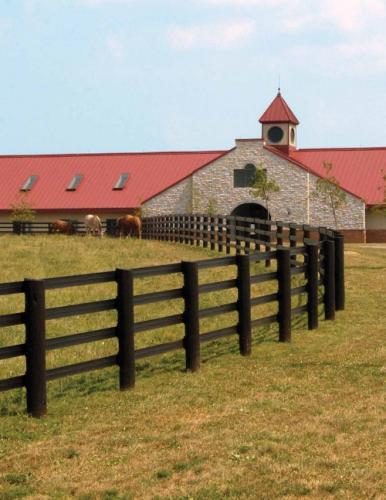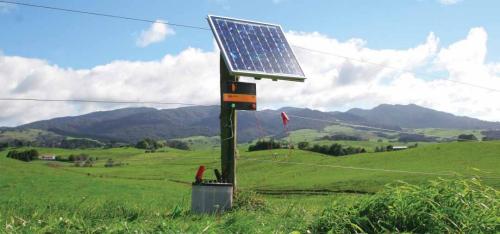Designing & Planning a Horse Fence: Beauty & Function

When it comes to designing and building your horse fence, beauty and function must both be considered together. While a fence may be designed to have an eye-catching appearance, it's also vital that the fence be able to function well and safely in such a design. As you plan out your fence's design and prepare to build it, consider the following.
Fence Selection for Border Fencing
Your border fence gives you an opportunity to present a clean, attractive, and eye-catching appearance to visitors and clients. Additionally, a border fence serves as a last safety net for any escaped horses. Border fences are traditionally made of wood, but new options like PVC, Vinyl, or other polymer options (like Centaur Fencing) offer the attractive appearance of wood without the necessary maintenance and danger that can comes with a wood fence.
There is nothing more impressive than entering a horse property that is lined with brilliant white rail fencing in perfectly straight lines. Regardless of what type of horse fencing you choose to use for your interior property fencing, pay particular attention to the appearance of the fencing that you use for your border fence.
Fence Visibility
Visibility is key in a fence's safety and maximizing fence visibility should be a top consideration when designing your fence. The first step in maximizing a fence's visibility lies in the selection of the fencing material - different fencing materials have different visibility properties, with some, like wood or PVC fence, being easier for horses to spot than others (wire being some of the more difficult to see, which is why it is usually used as temporary fencing).
Learn more about fence visibility and why it is important at My Horse University's article on horse fence planning.
Once you have selected your fencing type, consider whether you may need to increase its visibility to help keep your horses safe. Adding plastic flags is a popular, low-cost way to increase the visibility of wire or electric fencing. You might also decide to combine fencing types by using an electric or wire bottom portion of the fence combined with a more visible top line made of vinyl, polymer, or wood.
Fence Design and Horse Safety
The physical design of your horse fencing also contributes to the overall safety of your horses. When planning the location of pasture gates, avoid placing them in fencing corners where horses may bunch up and fight as a horse is being turned out or brought in. Instead, locate gates toward the middle of a fence line, and make sure that the gate is wide enough to allow for maintenance machinery to access the pasture.
Pasture corners create risky areas, and if possible, it's best to avoid corners in your fencing layout. When turned out in groups, horses can trap each other in the corners, and if fights break out they can result in serious injury. Additionally, a galloping horse is less likely to come to a sliding stop if there are no corners present in its pasture. If possible, design your fencing so that corners are gradually curved, rather than 90-degree angles.
Location of Important Elements
Where you decide to locate your horses' food and water plays an important role in the safety of the herd. Don't put food and water in the corners of a pasture - instead, try to locate it along the fence line so all horses can easily and safely access food and water. If you will be turning multiple horses out in the same pasture, then you may consider placing two water troughs in different areas so that no horse can prevent another from accessing water. Consider the location of a shed or windbreak carefully as well. Leaving space for horses to travel between the back of a shed and the fence line is asking for trouble, as a horse could become trapped in or bullied into the space. If there is a gap between the shed and the fence, you will want to fence that gap off. Be sure to avoid locating a shed in a lower geographic area, since such a location will be prone to mud.
Electric Fencing Specifications

When designing your electric fence, you will want to consider how many lines of electric fencing you need. Electric fence can be incorporated with another type of fence to gain the advantages of both fencing types - for instance, running a strand of electric fence along the top of a wooden fence can help deter horses from cribbing or leaning on the boards, lengthening the life of the wooden fence.
Once you have decided how many lines of electric fence you will be using, you will need to determine the type of charger that will power your fence. If you will be using a mains power charger, then be sure that you are designing the fencing so that you can easily access an outlet. I personally love Gallagher Brand fence chargers for all types of horses as well as other livestock. Gallagher even provides an energizer chart here which outlines what type of charger you should use depending on the animals you are keeping.
When it comes to designing and building a horse fence, good planning will go a long way towards ensuring that your fencing is safe, beautiful, and everything that you want it to be.
